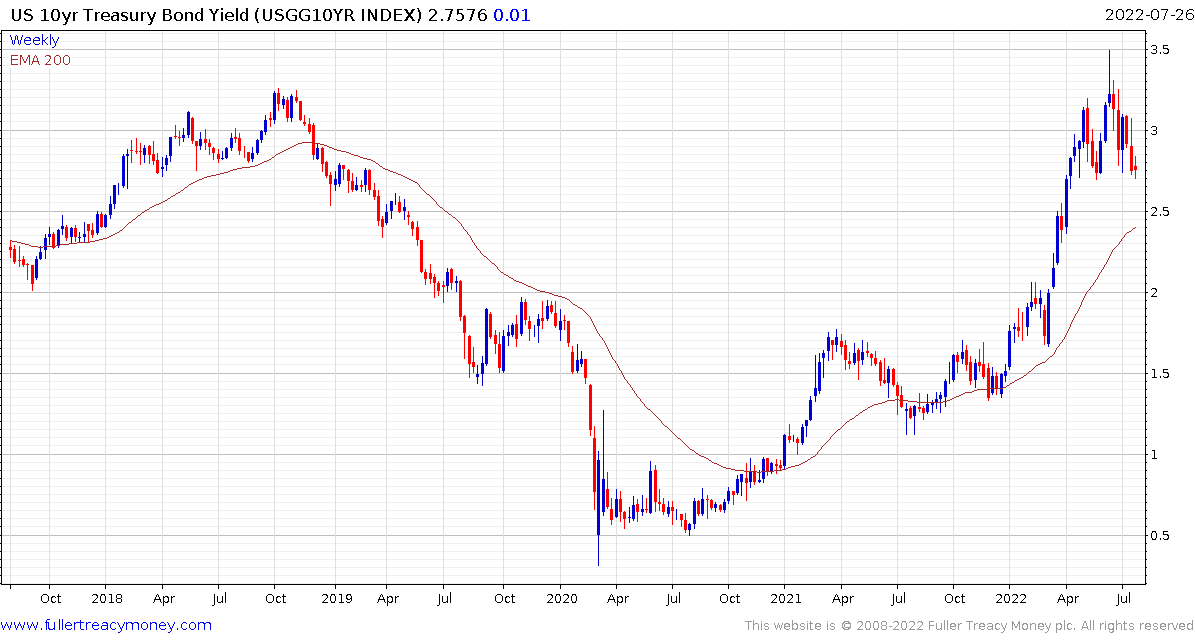Morgan Stanley Sees More Fed Hikes While JPMorgan Expects Pivot
This article from Bloomberg may be of interest to subscribers. Here is a section:
While Morgan Stanley strategists say it’s too early to expect the Fed to stop tightening its policy even as fears of a recession grow -- suggesting stocks have more room to fall before finding a bottom, JPMorgan Chase & Co. strategists say bets that inflation has peaked will lead to a Fed pivot and improve the picture for equities in the second half.
Sticky inflation is what will keep the Fed hawkish for longer this time around, according to Morgan Stanley’s Michael J. Wilson. While during the past four cycles the US central bank had stopped tightening its policy before the start of an economic contraction, triggering a bullish signal for stocks, current historic levels of inflation mean the Fed will likely still be tightening when a recession arrives, Wilson wrote in a note.
Equity markets “may be trying to get ahead of the eventual pause by the Fed that is always a bullish signal,” Wilson said. “The problem this time is that the pause is likely to come too late.”
Over at JPMorgan, Mislav Matejka said in a note on Monday that challenging activity momentum and softer labor markets could open doors to a more balanced Fed policy, leading to a peak in the US dollar and inflation.
Inflation may well have peaked or be close to a peak because the consensus is that it is entrenched. What we do not know is how quickly inflationary figures will come down and where they will subsequently stabilise.
Tighter financial conditions will inevitably result in a recession. The money supply splurge contributed to lifestyle creep for many consumers. Credit card usage is trending higher as cash runs out, but the desire to consume persists. The boom for buy now pay later is an additional vector for that trend.
 Meanwhile the nationalist trend of politics has resulted in fewer immigrants. Decisions made a few years ago are now showing up in a lack of available workers. That’s putting upward pressure on wages.
Meanwhile the nationalist trend of politics has resulted in fewer immigrants. Decisions made a few years ago are now showing up in a lack of available workers. That’s putting upward pressure on wages.
Living standards have to fall enough for demand to contract. That’s no easy process. Without that happening, inflationary pressures will not be contained. The Fed’s ability to talk the market in the direction it wants is based on its credibility. Without that it is toothless. They have said repeatedly they will do what is necessary to contain inflation. The contraction of Treasury yields suggests bond investors are well on the way to pricing in less inflation and economic contraction.
The war in Ukraine and Russia’s ability to weaponize energy prices suggests the risk of outright deflation is a clear risk for Europe.
Here is a section from an email by the head of quant at Morgan Stanley:
Market bearishness is approaching to extreme, and extreme sentiment usually comes with contrarian trade opportunities. It means market performance to reverse, and further style rotation from Value to Growth in the current cycle.
Given extreme bearishness usually would last for 4 – 6 weeks before market trough is confirmed, we see the turning point to be in mid-late Aug. It’s a big call from me in this year, and please look at the historical performance of “MS Asia Risk Sentiment Indicator”. It’s a very reliable leading signal of contrarian trade. Please let me know if you want to discuss further.
I think this is the market consensus right now. I’ve heard Jackson Hole mentioned as a potential catalyst point for the Fed to announce the peak of inflation on at least half a dozen occasions. The argument for recovery from current levels hinges on it.
Back to top

